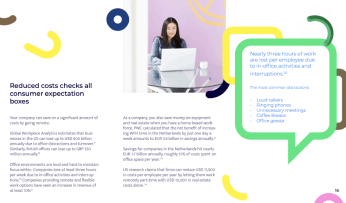Science tells us anger is a primary emotion in response to blocked goals or unmet expectations. Anger is a normal, healthy reaction to anything frustrating.
Unless you’ve been studying meditation for decades, everyone gets angry from time to time.
For instance, if something you’ve been looking forward to doesn’t happen or if you feel threatened. Any frustrated expectation can result in anger.
What makes customers angry?
All customers expect to be satisfied with a service or product. If they aren’t satisfied, they’re likely to feel a little frustrated.
A few common reasons for customer anger include:
- Problems with an order
- Waiting too long to receive a response
- An automated system gave incorrect information
- A previous agent was unprofessional
- The service interface is buggy
Or, maybe your customer is just having a bad day, and the tiniest issue tipped them over the edge.
What you should know about anger
When we feel angry, adrenaline floods our systems.
Adrenaline is a hormone that goes back to the stone age when humans developed it to ready our bodies for danger. As our adrenaline starts pumping, it sparks off chain reactions in our minds and bodies.
And sometimes, the results are frustrating.
An angry customer might be experiencing:
- Physical sensations like an accelerated heartbeat, rapid breathing, tense muscles, or sweating. They may even be clenching their jaws.
- Mental sensations such as panic, anxiety, or a negative thought feedback loop.
Reason and emotion are closely linked, and when their brains are on high alert, customers might not think as rationally as they usually would.
In some cases, they may even lose the ability to consider the feelings of others or be empathetic.
What your first response should be
Your first move should always be to de-escalate the situation to give the customer a chance to calm down. When they’re calmer, you’re in a better position to help them.
Examine how they’re expressing their anger and respond accordingly. Anger can vary from person to person and manifests in multiple ways. Some people turn cold and rude, some yell, and some cry.
Read the cues and avoid taking them personally, even if it feels like it is. As a customer support agent, you’re a sounding board for their anger against the company.
See where they’re coming from and respond professionally.
How to deal with angry customers
Dealing with dissatisfied customers is an artform, but it’s an easy one to master.
Let them talk
Like any other emotion, anger demands expression and must run its course. Let customers release their pent up emotions and opinions without interrupting them or making excuses.
Listen to them
Be open to any criticism or feedback and acknowledge their distress. Don’t push your opinions. If you listen to what a customer is saying, you’ll be able to find a solution.
Don’t take it personally
An angry customer may be cruel, but they aren’t mad at you. They’re frustrated with the situation. Tell them you’ll investigate the issue further, keep calm, and stay professional at all times.
Set boundaries
Occasionally, customers can be abusive. If a customer attacks you, let them know you’re there to help, but your organisational policy does not condone such behaviour.
If they don’t stop, politely refuse to assist them further.
Be reassuring
Address everything your customer raises. If you need to apologise, do so sincerely. Offer a refund or compensation right away. Your customer needs to know you’re 100% on their side.
Be cordial
Hearing ‘please’ and ‘thank you’ is gratifying. Your angry customer will appreciate it too, so long as it appears genuine. Good manners are contagious and help restore calm.
Angry customers are an opportunity
Nine out of ten customers who have a bad experience won’t contact customer support. Instead of going to the effort of contacting you, they’ll stop buying or subscribing to the product and potentially also leave a bad online review.
Whenever an angry customer is on the line, it’s your chance to restore their relationship with a brand. By showing them you care and doing all you can to help, you might even turn them into happy customers.
Happy customers will come back to a brand, tell their friends and family about it, and help spread the word. They might even remember you as the customer support agent who made their day better.
This time, it is personal and what excellent customer service is.





